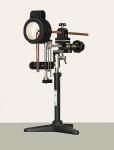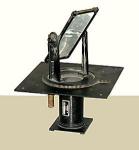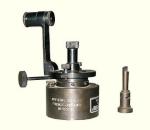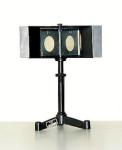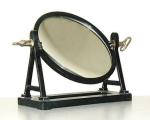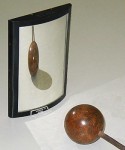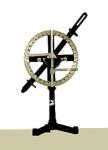Description
A vertical circle of 20 cm diameter is divided, on the four quadrants, from 0 to 90
degrees, and it is supported by a tripod. Two independent alidades with an index turn on the
axe of the circle. In the circle an index on the alidades gives the angle that they form with
the vertical diameter. This is represented by a ruler that individualizes the perpendicular
to the reflecting or refracting surface in the incidence point. Two rules, sliding
perpendicularly to the vertical diameter, allow the reading of the sine of the angles. The
first alidade, that is longer, sustains a rotating flat mirror, that is used to direct a
light beam across the rectangular slit of a diaphragm fixed under the mirror.
The second alidade sustains a circular frame with a glass polished
with emery and a black track to collect the reflected or refracted beam.
On the horizontal diameter of the circle we can fix a flat mirror or a very thick
half-cylindrical glass block, with the flat side up. With the mirror we can verify the
reflection law; with the half-cylindrical glass we can verify the laws of refraction, and
the total internal reflection and we can determinate with good approximation the critical
angle of this glass, and the refraction index.
|
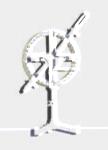

 Menu
Menu

